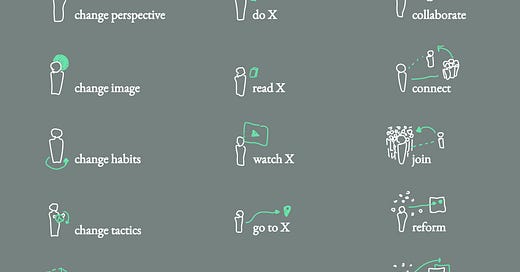Writers are lodged in a crisis of who: Do I write for myself? Do I write for the masses? Am I trying to capture my life in prose or change the world with earworms? Who is this for?
William Zinser says, “don’t try to guess what… the country is in [the] mood to read.” So an entrepreneur might tell you to use data analytics to know what they’re in the mood to read. Vonnegut says to zoom in: “Write to please just one person. If you open a window and make love to the world, so to speak, your story will get pneumonia.” Which person though? Your best friend? A theoretical but specific stranger? (34-year olds in Northeastern cities who like etymology.) John McPhee says to start your session with “Dear mother…”
In The Craft of Writing Effectively, a U. Chicago professor, Larry McEnerney, gives some practical advice that might bum out the romantics: if you’re writing professionally, it’s not about explaining your ideas to your readers, it’s about changing their ideas.” There are a few ways to interpret this quote, but the word that now jumps out to me is “change.”
What is the common thread between personal growth stories, call to action persuasions, academic arguments, and political manifestors? Change.
Something was this, but now it’s that.
Or maybe it should be that.
So maybe it doesn’t matter if you’re writing about something trivial (your upcoming vacation to Maryland in August) or something existential (the icebergs are melting); what matters is how you model transformation. Whether you show or tell, invite or command, a well-shaped catalyst will get readers questioning how they need to change their outlook or actions.
A catalyst is the specific agent of change. When we render the world before and after the catalyst, an essay is imbued with relevance and urgency.
This is the last pattern of the series on Thesis, and it closes the first section of Essay Architecture. Here’s a recap:
Microcosm : make your thesis tangible through a scene or symbol;
Response: put your thesis in context and show us how it’s different;
Catalyst: reach through the page to change the reader.
Essays are thought to be a short, casual format, but when the catalyst is potent, it can function like a psychedelic. The other day I sat down to read EB White’s, “Here is New York,” and in under half an hour he permanently changed my lens to the place I was born.
Here’s what’s in today’s essay (for paid subscribers):
The process of discovering a catalyst.
How to strengthen a catalyst by modeling the before and after.
Some brief ethics on brainwashing.
If you don’t subscribe for my paid tier, I hope you still found value in the intro above. The next overview post (on Material) will be free. If you don’t want my posts on the craft of writing (free & paid), but still want my other posts (essays, updates, logs, etc.), you can update your account settings. Otherwise, hope you subscribe and enjoy the rest of this post.
Keep reading with a 7-day free trial
Subscribe to Essay Architecture to keep reading this post and get 7 days of free access to the full post archives.





